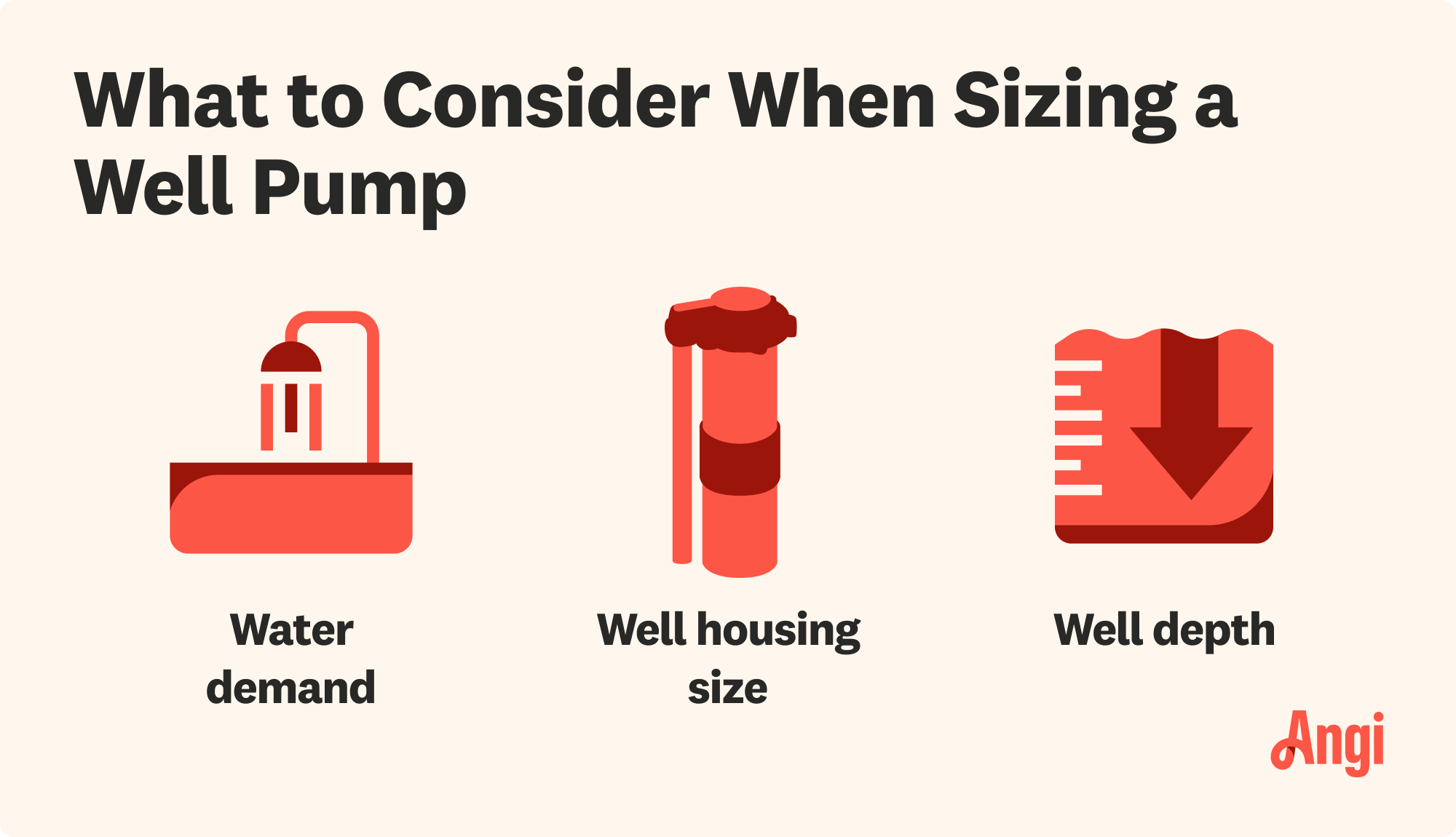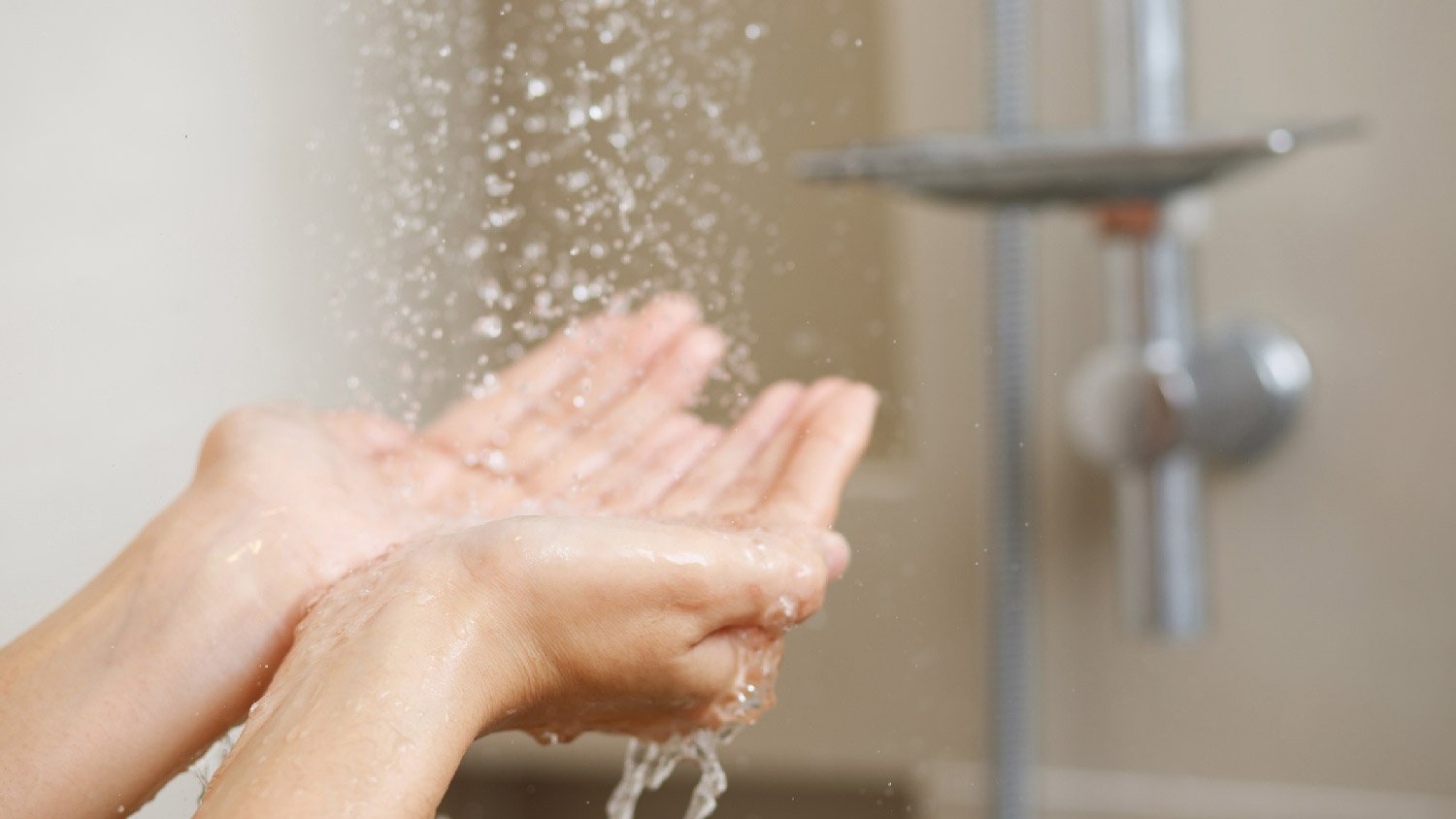
The cost of a well inspection depends on the design of your well, the location of your property, and the add-ons you select. Use this guide to plan your budget.
Keep your water flowing with the right size well pump


A good well pump provides consistent flow and even water pressure to your home.
Jet pumps and submersible pumps are the two most common types of well pump.
Jet pumps are used for shallow and medium-depth wells, while submersible pumps are for deep wells.
Calculating your gallons per minute (GPM) helps you choose the best well pump size for your home.
The average three to four-bedroom home uses a well pump of 8 to 12 GPM.
From relaxing showers to sparkling clean dishes, good water pressure is key to a comfortable home. The right well pump is essential to ensuring that every appliance gets the water it needs. Whether you’re replacing a broken well pump or building a new well, we’re exploring different types of well pumps and some factors to consider when deciding what size well pump is the best fit for your home.
When you’re building a new well, the process typically falls into three steps:
Drilling the main hole for the well
Creating a trench to connect your well to your home
Installing the well pump to bring water up and into your house
The well pump includes two parts: the pump and the motor. Together, this pumping unit moves water into your pressure tank, where it then flows into your taps and appliances. Choosing the right size for your well pump ensures that a consistent flow of water reaches everywhere you need it to go.
There are two main types of well pumps: jet and submersible. Take a look at the differences between these two water systems.
Jet pumps are mounted above your well and use suction to pull water upward. The pump creates a vacuum that sucks up the water, delivering it into your home at high pressure.
Since the pressure system needs to maintain its vacuum in order to deliver water, the pump needs to be filled with water to start. A system of one-way valves keeps the water from flowing backward so that the pressure vacuum stays consistent.
Jet pumps are great for shallow wells as they can deliver strong pressure, but they tend to lose their efficiency at deeper levels. Shallow wells are generally considered to be wells less than 25-feet deep.
Wells from 25 feet to 90 feet are medium depth and can usually be managed with a jet pump that includes a deep-well nozzle. The advantage of jet pumps here is that they don’t need to be fully submerged, making them popular for wells with a fluctuating water table.

While jet pumps use a vacuum to pull water up, submersible pumps use a motor to push it upward instead. An above-ground power source fuels the motor, which drives water through the well pump pipe and into your home. Unlike the jet pump, a submersible pump needs to be fully submerged in your well in order to provide consistent flow.
The advantage of submersible pumps is that pushing water is more energy-efficient than pulling it, making these a good choice for very deep wells. Very deep wells are usually between 90 feet to 400 feet. Although you’ll have to remove the submersible pump if you need a new well pump, they’re still a great low-maintenance option as they don’t need to be restarted after things like a power outage.

Well pumps are sized based on gallons per minute, or GPM, which measures the volume of water that your pump can move from the well into your water tank.
Most homes use a well pump size between 8 to 12 GPM, but there are a few factors that will affect your needed GPM as well as your decision about the right pump size for your home.
You can calculate the water needs for your home by working out the GPM required in peak periods. The simplest formula is to add one GPM for every major water fixture in your home.
For example, most bathrooms have three water fixtures (toilet, sink, and shower).
If your home has two bathrooms, you’ll start at 6 GPM.
Then add one GPM for the kitchen sink, dishwasher, washing machine, and outdoor hose for a total of 10 GPM.
If you have other fixtures like a laundry sink, hot tub, and so on, you’ll want to add an extra GPM for each of those.
Once you’ve chosen a jet or submersible pump based on your well depth, your GPM will tell you the size of the well pump you need. Aim for something that hits your GPM or measures one or two points above, if the pump size is calculated by GPM range.
Choosing a lower size may leave you with weak water pressure and a strained well pump that needs repairs. Choosing a well pump that’s too big could mean that the pump will use more energy than it really needs to, which will cost you in energy bills.
Not all wells give you the flexibility to pick your ideal pump size. If your well housing is too narrow for a larger pump, you can install a jet pump with a booster to kick up the water pressure. Different horsepower pumps can also boost your water pressure in the GPM size you need.
If you have a very deep well and can’t use a jet pump, a larger well pressure tank can store more water and offset the demand on the well pump.
When in doubt, a local well pump contractor can offer advice on selecting the right well pump, help with solutions for narrow well housings, and ensure your well pump is properly installed and running smoothly for maximum water pressure.
From average costs to expert advice, get all the answers you need to get your job done.

The cost of a well inspection depends on the design of your well, the location of your property, and the add-ons you select. Use this guide to plan your budget.

The cost of a well casing replacement depends on materials, well depth, and labor. This guide will help you find the right casing for your well and budget.

Well pumps require electricity to operate and can affect your monthly bill. Learn about the factors that impact the average cost to run a well pump per month.

If your well water smells like sulfur, you’re not alone. Find out why well water would smell like sulfur and how to get rid of this rotten egg odor.

Extend the life of your well pump with a healthy water well pressure tank. Learn the steps to install a new well pressure tank successfully in your home.

Explore these simple instructions to learn how to install a submersible well pump safely on your property. It might be easier than you think.